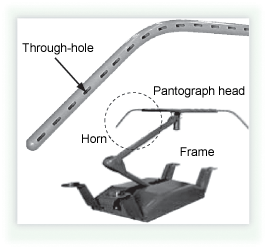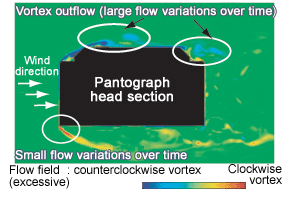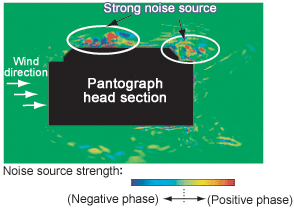| 5. Numeric Simulation Method for Sources of Flow and Aerodynamic Noise | |||||
|
As a detailed distribution of the sources of flow and aerodynamic noise is difficult to obtain by simple experiment, a numeric simulation was developed for this purpose. Fig.1 shows an example of the distribution of aerodynamic noise sources around the pantograph horn determined by numeric calculation. A mechanism to reduce aerodynamic noise was verified by drilling holes intermittently in the pantograph horn. This had the effect of distributing adjacent noise sources with a phase of 180 degrees from each other, causing them to cancel each other out. This method is intended to complement an experimental technique using a large low-noise wind tunnel. Fig.2 shows an example of calculation of the flow field around the head and the distribution of noise sources. Strong vortices were generated by the shape of each part of the pantograph head, clarifying the mechanism affecting aerodynamic upward force. It also showed that strong noise sources were formed in locations with large variations in flow over time. Such findings set important guidelines for improving shapes for noise reduction. The numeric simulation method will be useful not only for power collection equipment, but also for reviewing and finding measures to reduce aerodynamic noise generated in various parts of the vehicle.
|



